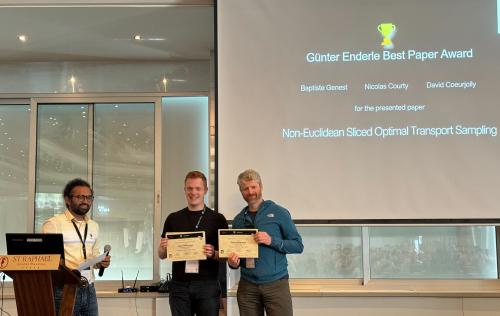
Eurographics 2024 best paper award in the Origami team
In machine learning and computer graphics, a fundamental task is the approximation of a probability density function through a well-dispersed collection of samples. Providing a formal metric for measuring the distance between probability measures on general spaces, Optimal Transport (OT) emerges as a pivotal theoretical framework within this context. However, the associated computational burden is prohibitive in most real-world scenarios. Leveraging the simple structure of OT in 1D, Sliced Optimal Transport (SOT) has appeared as an efficient alternative to generate samples in Euclidean spaces. This paper pushes the boundaries of SOT utilization in computational geometry problems by extending its application to sample densities residing on more diverse mathematical domains, including the spherical space S^d, the hyperbolic plane H^d, and the real projective plane P^d. Moreover, it ensures the quality of these samples by achieving a blue noise characteristic, regardless of the dimensionality involved. The robustness of our approach is highlighted through its application to various geometry processing tasks, such as the intrinsic blue noise sampling of meshes, as well as the sampling of directions and rotations. These applications collectively underscore the efficacy of our methodology.
